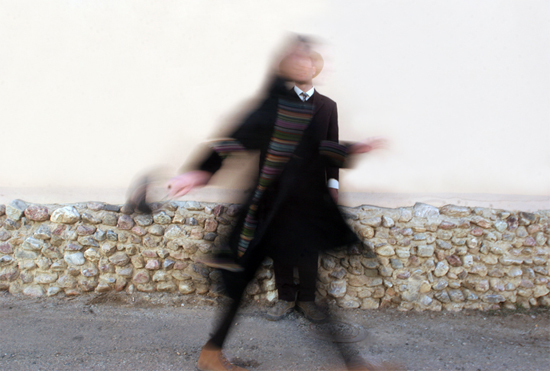When I look at modern day home construction I become nauseous
But when we traveled to Jerusalem to play a concert, the beauty of the houses struck me, and for the first time, I became inspired to own a home. In Jerusalem, as in old cities in general, the architecture follows a pattern that has been laid down for centuries. It is a deep knowledge that is being slowly erased, by modern building ideas and materials.
I began to look into the idea of building simply, and cheaply, using materials that are found the region I live in
Why should we all live in wooden houses, consisting of wood shipped in from a far off land? In New Mexico, we have hundreds of years of adobe – houses made of mud and straw. This makes sense for a desert climate, and combining old knowledge with new technology, such as solar heating, can create a wonderful environment to live in.
Not only are the houses healthier for people, they can also be much cheaper to build
I wonder what the average homeowner spends on a house. We must consider the price plus interest. It is the biggest investment most people make in their lives, and it will take them most of their lives to pay it off. And what is the average life span of a house built in England or America after World War II? If a family were not weighed down by a mortgage, what could they do with the money and time saved?
Mortgage is a French term. It means "death pledge."
But very few people consider it as such when they buy a new house. The building industry is exceedingly wasteful, and many of its products, from dry wall to paint to insulation to carpet, contain highly toxic chemicals. They are not designed to suit the environment they are in. The modern day architect for the most part couldn’t care less about vernacular architecture and the wisdom of centuries of building. By looking beyond modern day building, I thought that I had found a way out; by saving my money, building something of my own, with my own movements and needs in mind.
But there is a catch
In places like the US and England, the government has established building and planning codes, with the intention of creating safer structures. But unfortunately, most of the good intentions of these codes are lost, and we are now faced with building codes that are used to prop up the construction industry and the people involved in it. If you do not follow the codes, you face having your house torn down. And yet if you do, you are looking at excessive expense, lack of freedom in materials and design, and the whole dream of your own home becomes impossibility. And when I say "your own home" I mean the home that suits you, not the home designed in an impossible attempt to suit everyone. Your own home becomes an impossibility, unless you go to the bank and get a loan. That loan is what America is built upon, these days. Or I should say that America is built upon the work that is required to pay that loan off.
Over the last two years, I have been investigating this from a layman’s perspective
Heather and I have been to straw bale houses in Poland, we have helped hippies in New Mexico, who have bought land and are building without having passed code. I have talked to architects and bought books from the 70s about "the coming vernacular architectural revolution." That revolution has never happened, just as the "coming energy revolution" of the 70s never happened. The two are tied together, and just as we need new ways to meet our energy needs we also need new means to provide affordable, non-toxic housing to people.
In England cob houses have been built for centuries
Cob is a style of wall building that is similar to adobe, but there are no bricks, just loaves of mud and straw that are sewn together on the walls. It is incredible, that in such a cold climate, cob can be successful. But it is. There are many cob houses that still stand in Devon, and a select people few are beginning to build with it again. If you can source the main wall building material from your property, then you have cut down on a massive expense. But how can a building code measure the worth of cob? How can we regulate the ground beneath our feet? Somehow, it is easier to regulate timber from unknown forests in China.
"One half of the world’s population, approximately three billion people on six continents, lives or works in buildings constructed of earth." From eartharchitecture.org
And yet building codes in the US actually hamper the strength of modern earth architecture. The renowned Egyptian architect Hassan Fathy was commissioned to build a Nubian style mosque in New Mexico, but had to abandon his plans due to the myopic building codes. I guarantee you his buildings, which were constructed by master masons from Egypt, using ancient techniques, will outlast the modern stick-frame houses of the suburbs nearby. What is the life span of Portland cement? Around 100 years. Please show me a modern day house that does not rely on it.


